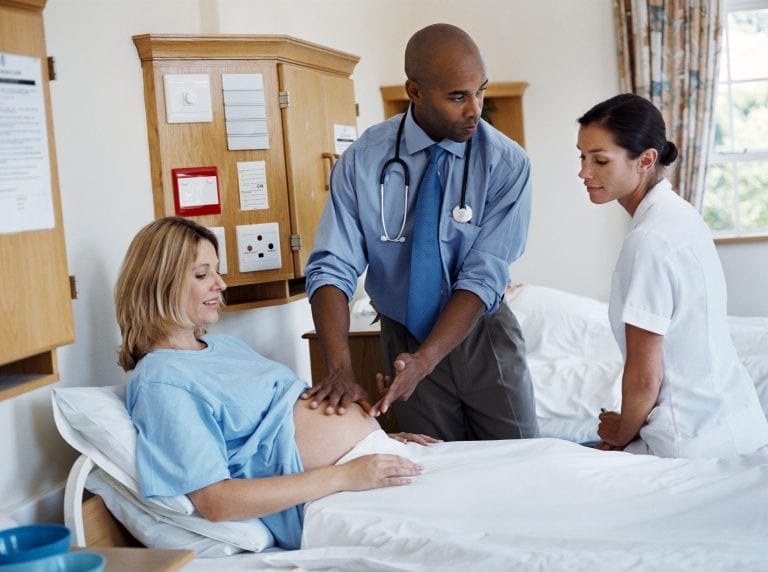If your idea of the perfect birth plan includes laboring upright and freely, without pain medications and beginning breastfeeding as soon as your baby is born, you may be surprised to learn that birth in the US doesn’t typically look like this, which is why you should search for a mom and baby friendly birthplace.
In many facilities, you’re more likely to labor lying in a bed, possibly with an IV and ongoing fetal monitoring, and you’ll survive on ice chips until your baby joins you for her first meal.
Find a supportive birthplace
Experts agree that the best way to have the pregnancy and birth that you envision is to begin with a qualified healthcare provider who shares your beliefs and values about pregnancy, labor and birth. Then evaluate the facility where she or he will help you birth.
Use our checklist to gauge how accommodating your potential birth facility may be. This list is not meant to be exhaustive but for each “yes” you can check, the greater the chances that you may accomplish your desired natural birth.
Lastly, ask if the facility is a “Baby-Friendly” facility. This designation goes to hospitals and birthing centers that give moms the information, confidence, and skills needed to successfully initiate and continue breastfeeding their babies, as well as feeding formula safely for those moms who will do so. It’s part of the global Baby-Friendly Hospital Initiative by the World Health Organization and the United Nations Children’s Fund. Currently, just more than 100 facilities in the US have this designation although the CDC recently urged all hospitals with birthing facilities to become baby friendly. Find one near you at babyfriendlyusa.org/eng.
Ask if the facility is committed to:
- Supporting natural birth with policies that support freedom to move around, and equipment, such as birthing beds to support upright labor and birth, birthing balls and showers or tubs for pain relief and labor support, limited use of electronic monitoring unless medically indicated and staff to provide ongoing labor care.
- Cesareans only when medically necessary: You’re more likely to have a cesarean birth if the facility has cesarean rates above the national averages (now 30%); risks to mom and baby increase when major surgery could have been prevented.
- Rooming in: This keeps your baby with you 24/7, increasing your opportunities for bonding and reducing difficulties with breastfeeding.
- Breastfeeding as the optimal food and best way for you to feed your baby, including having expert lactation support available.
- Initiating breastfeeding as quickly as possible post-birth: Ideally, within the first minutes of life but no longer than an hour for a normal, vaginal birth; and within two hours if you undergo cesarean.
- Skin-to-skin or kangaroo care: This helps your baby more rapidly stabilize his or her heart rate, temperature, and respiratory rate, improve bonding, and increase breastfeeding success.
ADDITIONAL READING:
How To Have A Good Birthing Experience
Best Birthing Positions to Promote Vaginal Birth
Choosing the Place to Give Birth
Baby Friendly Hospitals: Baby Friendly—and Mom Friendly, Too!






Comments are closed.